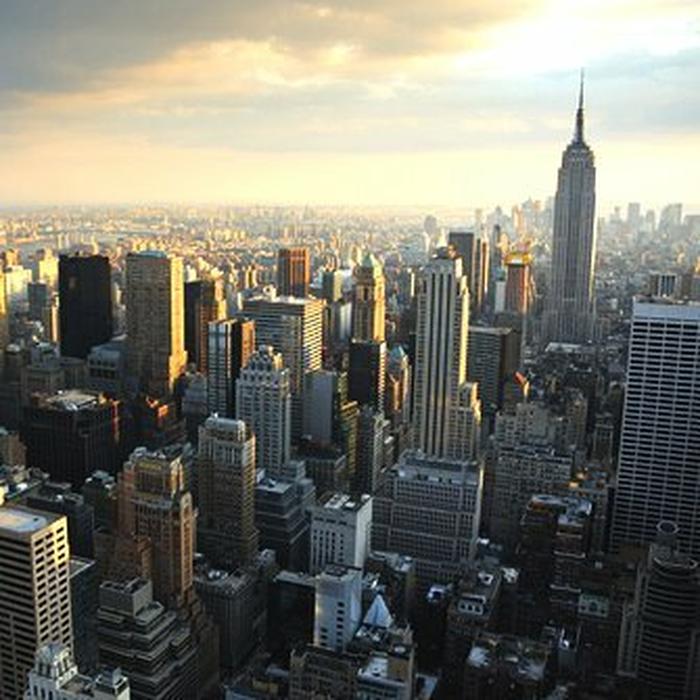
—Thomas Wolfe
New York. The city. Home to 8 million devotees. It’s not always easy, and in the summer the subway is hotter than Andrew Garfield, but there’s only one New York. It’s been the backdrop, the other personality, the soul of countless films, TV shows, photographs—and, of course, many, many luscious and lovely books.
Here are a few of my favorites:
Just Kids, Patti Smith
This National Book Award winner has received no shortage of press. In addition to being a fantastic book about the rise of punk rock singer and songwriter Smith and artist Robert Mapplethorpe, it’s also a tremendous paean to a New York that keeps getting pushed further and further to the edges of the outer boroughs—a place where art and struggle and friendship sway in a delicate balance between success and hunger. Smith and Mapplethorpe’s relationship was one of those wonderful accidents of fate and history, that provide a metaphor for a lifestyle that by turns fades and emerges with the city’s fortunes. Smith is a glorious writer, direct and kind, with her songwriter’s grasp of language and pace.
Plus, she and Robert were just so damn cool.
The Age of Innocence, Edith Wharton
A tale of New York high society in the late 19th century—but really, even then, the young were lamented for doing away with the social mores of the time and people still complained about having to go above 42nd St.
Wharton was a quintessential New Yorker, and Age of Innocence is an authoritative take on class, charm, scandal, grief, love—all the same bits that make Candace Bushnell a cottage industry today. Newland Archer’s impossible love for the fallen Countess Olenska and the subtle connivances of his wife May to preserve her way of life play out amid Wharton’s famed satirical prose. It’s a brilliant movie as well.
Fortress of Solitude, Jonathan Lethem
This one will break your heart. Set on Dean Street, in pre-gentrification Boerum Hill, Solitude is about the childhood of two different boys—Dylan, who is white, and Mingus, who is black—and what they mean to one another over their lifetime. It brokers with dense, delicate prose, the depths of our memories, our childhood loyalties, and the small moments that define everything we carry with us. Mingus is a literary hero for the ages.
Dreamland, by Kevin Baker
This is a strange one, because I can’t say that I recommend it entirely. I didn’t really like any of the characters, and occasionally Baker seems overly enamored by his own words, but this detailed story about early 20th century immigration, labor politics, reformers, thugs, and the often despicable and brave people that made it all happen, stuck with me in a way I wasn’t expecting. It humanizes—instead of casting as archetypes—the immigrants and nativists of the Lower East Side and Coney Island, with vivid descriptions and often devastating anguish and betrayal. The strange addition of Freud’s trip to New York and a less than satisfying ending are further obstructions to a hearty endorsement, but it won’t be a waste of your time.
(Also, I bought it at the Tenement Museum, which is not only a great museum, but it has the best bookstore for New York-centric books.)
The Tummy Trilogy, by Calvin Trillin
Calvin Trillin has been referred to as the “Walt Whitman of American eats,” and his hilarious adventures eating “real food,” while also capturing the American spirit of entrepreneurship, the decline of family-owned eateries, and the perils and pleasures of eating and traveling with your wife (Alice, of Alice, Let’s Eat) and kids, certainly earn him a place of honor in Mr. Whitman’s America.
This collection is from his three gastronomic tomes, and includes his famous essay A Sunday Morning, about one of his (and my) favorite New York establishments, Russ and Daughters. (You haven’t had a bagel with lox and cream cheese if you haven’t had one from Russ and Daughters.) Trillin also embodies that classic New York conceit: If he didn’t talk about the ribs from his hometown of Kansas City so much, you’d never know he wasn’t a born and bred New Yorker.
Bonus Essay: "Here is New York," by EB White
In which, Mr. White says this:
There are roughly three New Yorks. There is, first, the New York of the man or woman who was born here, who takes the city for granted and accepts its size and its turbulence as natural and inevitable. Second, there is the New York of the commuter—the city that is devoured by locusts each day and spat out each night. Third, there is the New York of the person who was born somewhere else and came to New York in quest of something. ...Commuters give the city its tidal restlessness; natives give it solidity and continuity; but the settlers give it passion.”
Honorable Mentions